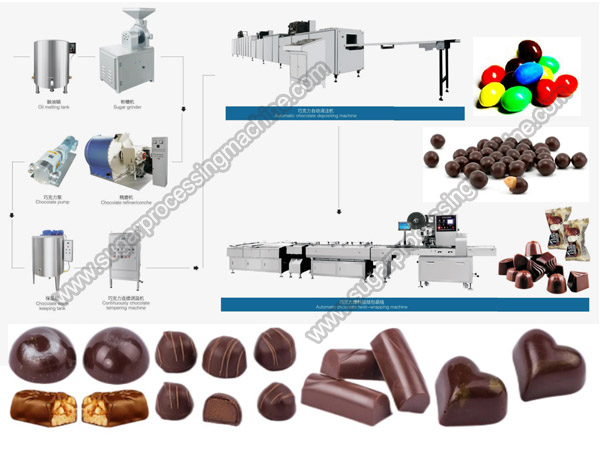Adr :636 Yunqiao Road, Pudong New Area, Shanghai, China
Phone : +86 18221614363
Email : zhimachine@foxmail.com
Tel : +86 18221614363
Important steps in chocolate production
There are several steps in the chocolate production line that are crucial for the quality and taste of the final product during chocolate processing, and can be considered as important links:

1. Fermentation and drying of cocoa beans
Fermentation: Freshly picked cocoa beans are fermented together with fruit pulp, usually lasting 3-7 days. During the fermentation process, microbial action reduces the acidity and bitterness of beans, producing unique flavor precursors for chocolate. The control of fermentation time and conditions directly affects the basic flavor of chocolate.
Drying: Fermented cocoa beans have a high moisture content and need to be dried to reduce the moisture content to below 7%. Proper drying can prevent mold growth and further stabilize the flavor. The drying method (such as sun exposure or mechanical drying) and time also have a significant impact on the quality of chocolate.
2. Baking
Baking: Cocoa beans are roasted at a temperature of 110-140 ℃ for 30-60 minutes. The baking temperature and time determine the aroma and color of chocolate. The baking method of high-temperature short-term or low-temperature long-term can bring different flavor characteristics, which is a key step in shaping the unique taste of chocolate.
3. Grinding and refining
Grinding: Grind roasted cocoa beans into a fine cocoa paste. During the grinding process, cocoa butter gradually releases, forming a thick liquid. The fineness of grinding affects the delicacy of chocolate taste.
Refining: Cocoa paste is stirred and heated for a long time (24-72 hours) to remove impurities, improve smoothness of taste, and further adjust flavor. During the refining process, the mixing ratio of cocoa butter, sugar, and other ingredients is crucial, determining the sweetness, bitterness, and overall balance of chocolate.
4. Temperature regulation
Temperature regulation is the core process of chocolate making, which precisely controls the heating and cooling processes to form a stable crystal structure of cocoa butter. The temperature adjustment steps include:
Heating up: Heat the chocolate to 45-50 ℃ and melt all cocoa butter crystals.
Cooling: Cool to 27-28 ℃ to promote the formation of stable V-shaped crystals.
Heating up: Heat again to 31-32 ℃, remove unstable crystals, and retain the ideal crystal structure.
The temperature adjustment process determines the glossiness, brittleness, taste, and melting characteristics of chocolate.
5. Forming and Cooling
Molding: Inject the temperature adjusted chocolate into the mold to ensure even pouring and avoid bubbles.
Cooling: Rapid cooling at a controlled temperature to solidify chocolate into shape. The cooling rate and uniformity affect the appearance and internal structure of chocolate.
6. Packaging and Storage
Packaging: Use appropriate packaging materials to prevent chocolate from getting damp, oxidized, and contaminated, and maintain freshness.
Storage: Store in a cool, dry, and dark environment, with temperature controlled at 15-18 ℃ and humidity not exceeding 50%.
The above steps are key links in chocolate production, and each step requires strict quality control and process management to produce high-quality chocolate products.
All rights reserved:Zhi Yan Group Co., Ltd SitemapSitemapCandy making machine candy production line Toffee production line biscuit production line lollipop production line Gummy production line Popping boba production lineManufacturer